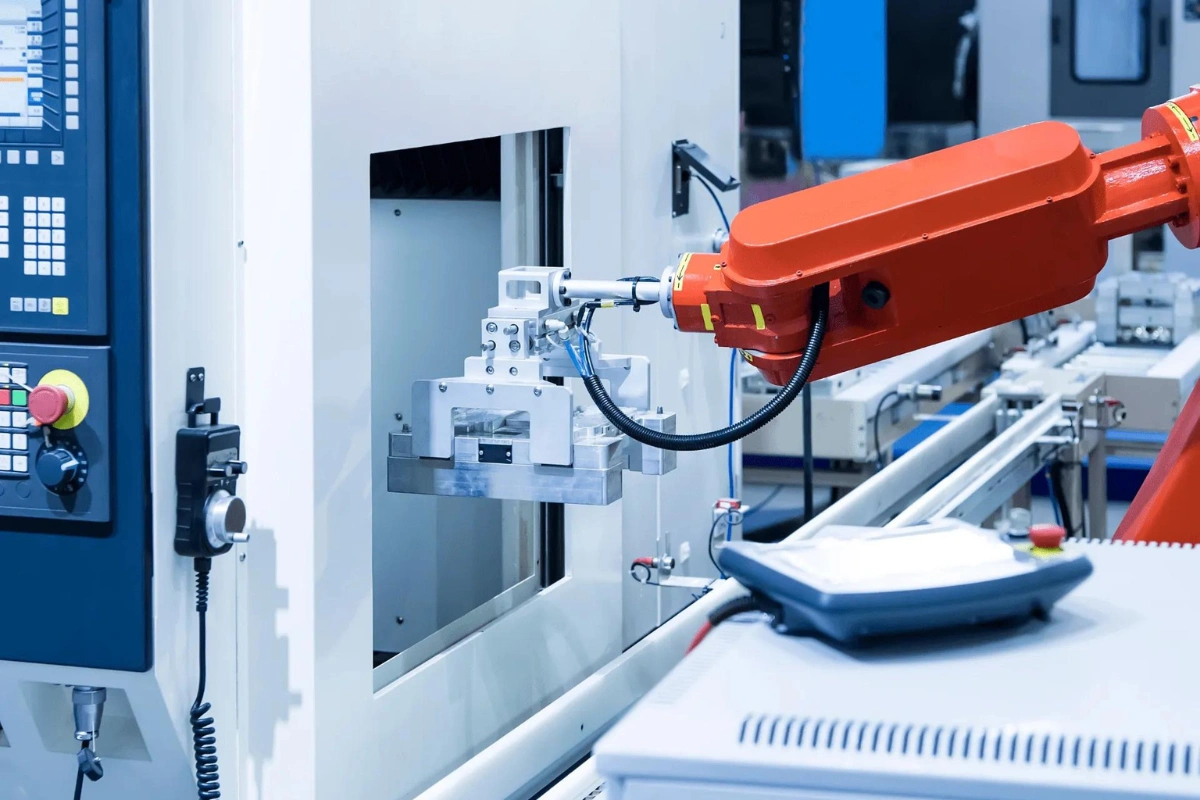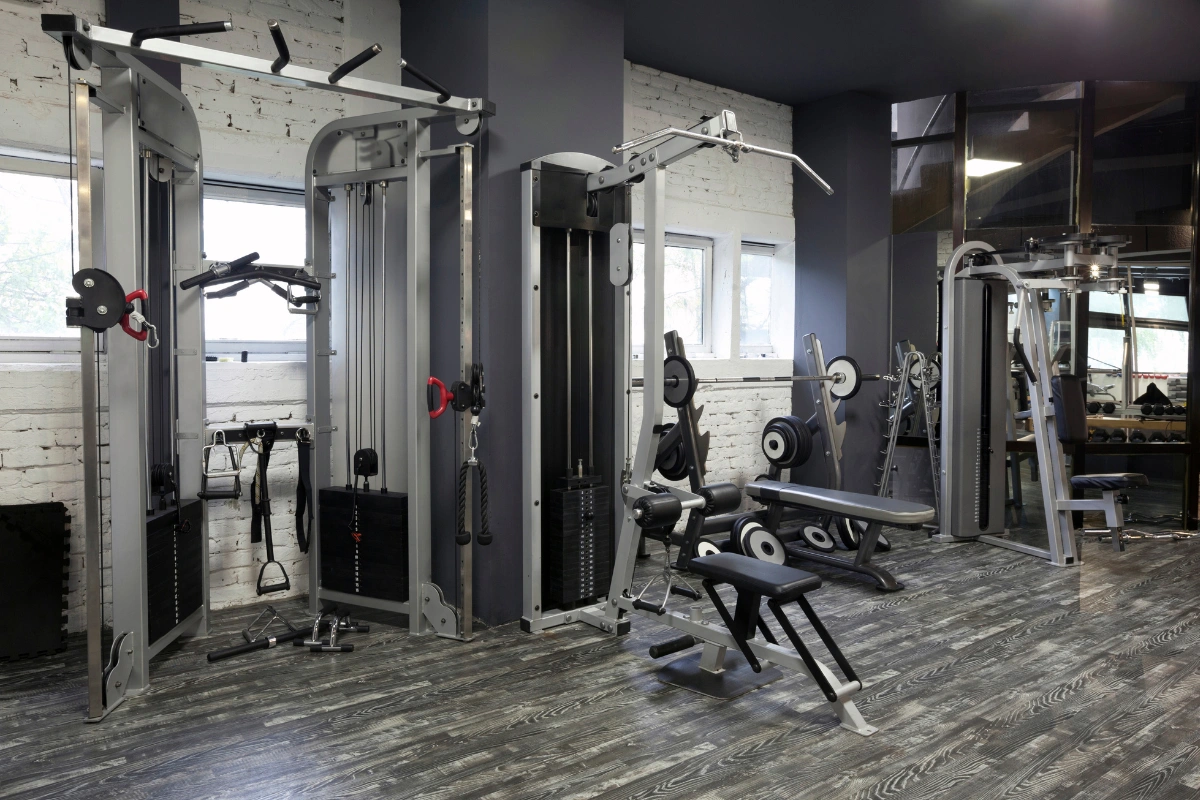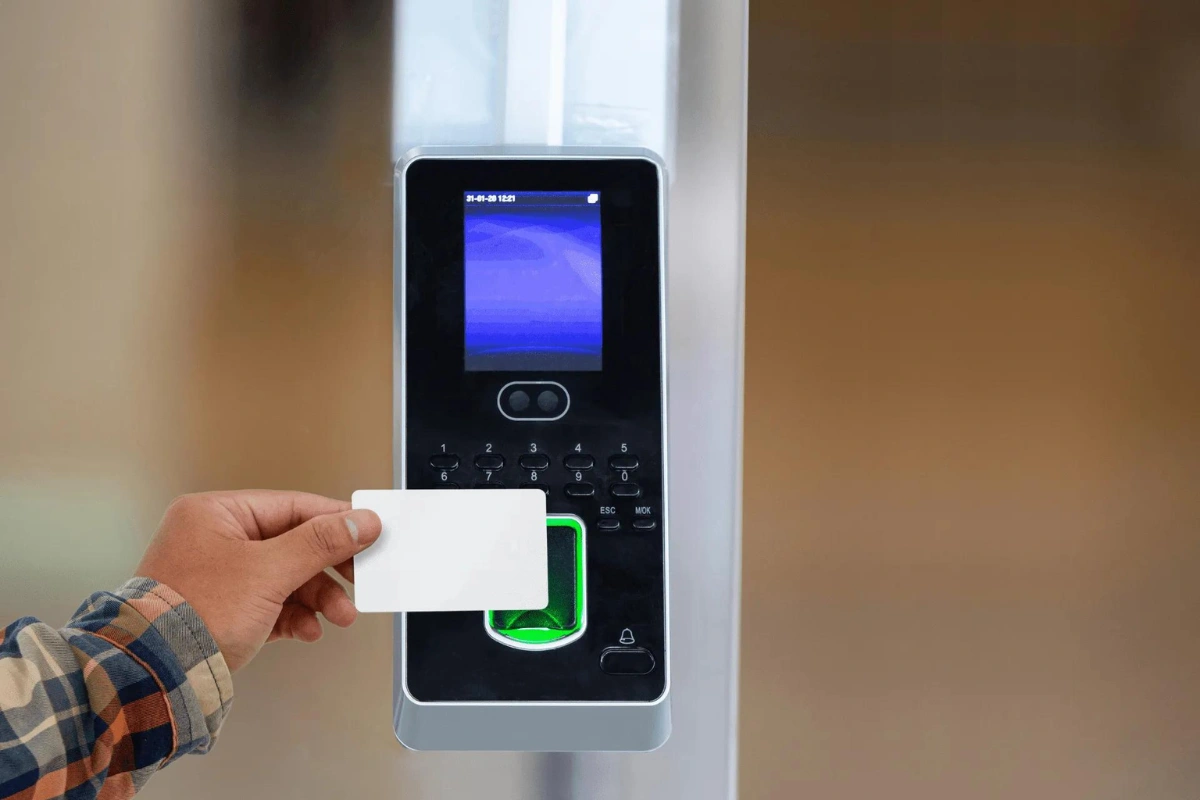Innovative RFID Hardware Solutions
Expertise from Germany
Since 2003, iDTRONIC GmbH has been developing and producing high-performance RFID and IoT solutions, devices for mobile data collection, high-quality turnstiles and intelligent locking cylinders – reliably and made in Europe.
With a clear focus on quality and innovation, we offer customised solutions for companies of all sizes, from medium-sized businesses to international corporations.
Expertise from Germany
Since 2003, iDTRONIC GmbH has been developing and producing high-performance RFID and IoT solutions, devices for mobile data collection, high-quality turnstiles and intelligent locking cylinders - reliably and made in Europe.
With a clear focus on quality and innovation, we offer customised solutions for companies of all sizes, from medium-sized businesses to international corporations. In addition to our wide range of standard products, we realise individual adaptations that are precisely tailored to your requirements.
Our independence as an owner-managed company enables us to make quick and flexible decisions and work closely with our customers in a spirit of partnership. Thanks to our global partner network, we successfully realise projects worldwide.
Benefit from our many years of experience, agility and our international team of experts - we look forward to supporting you.
Our Expertise
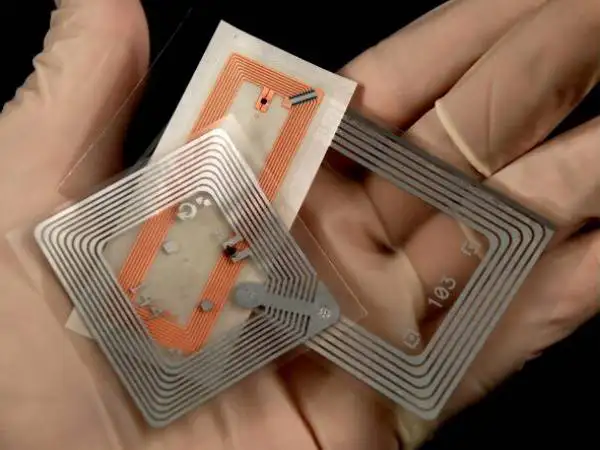
RFID / IoT Products
RFID / IoT Products
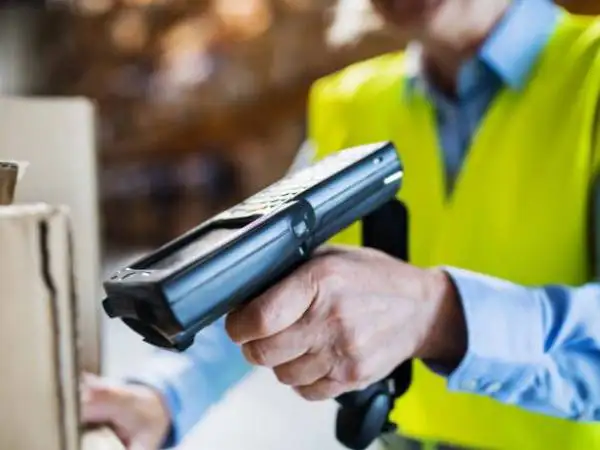
Mobile Data Collection
Mobile Data Collection

Turnstiles / Security Gates
Turnstiles / Security Gates
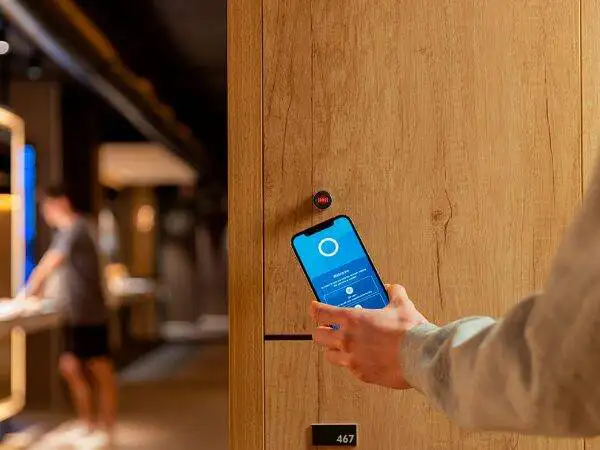
Electronic Locking Systems
Electronic Locking Systems
Why iDTRONIC ?
Customized Solutions
From concept to tailored RFID solutions for your business, iDTRONIC GmbH not only offers a wide portfolio of RFID hardware products but also specializes in the development of customized solutions and components.
Our RFID services include the development of:
- Electronics
- Antennas
- Firmware
- Enclosures
- RFID tags
- Certifications
according to customer specifications.
From consulting, development, and manufacturing to support during commissioning, our customers receive everything from a single source. Our motivated team, with its expertise, is ready to assist you.
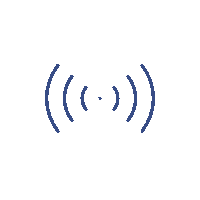
Comprehensive Portfolio
Comprehensive Portfolio
iDTRONIC GmbH offers hardware solutions for all RFID standards and frequencies. Our offerings include stationary and mobile readers/writers, antennas, as well as matching tags and transponders for UHF, HF/NFC, and LF frequency ranges.
iDTRONIC products are optimized to meet the specific requirements of your intended applications, including:
- Reading range and speed
- Application area
- Enclosure protection class
- Data security
- Communication interface
Our motivated team, with its expertise, is ready to assist you and looks forward to your inquiry.

Technical Support
Technical Support
Do you have questions about RFID and IoT? Do you need a specific RFID product? Would you like to leverage our expertise for your application? Give us a call. We would be happy to assist you.
Are you looking for solutions for a specific industry?
RFID FAQ
Ultra High Frequency (UHF 840 – 960 MHz)
- UHF systems have very high transmission speeds and ranges
- The EPC (electronic product code) of the UHF tag (transponder) can be changed at will
- For the tag antenna, a dipole instead of a coil is sufficient
- Transponder inlays (chip + antenna) can be produced as continuous foils
- Typical applications: Warehouse management, retail, logistics, asset tracking, RFID tags on goods.
High Frequency (HF 13,56 MHz)
- HF systems have high transmission rates and high clock frequencies
- Short wavelengths, requiring only a few antenna windings -> RFID transponder antennas can be smaller and simpler
- Transponder inlays (chip + antenna) can be produced as continuous foils
- NFC and LEGIC RFID technologies belong to the HF frequency range.
- Typical applications: Payment systems, identification in public transport, library management, NFC (Near Field Communication).
Low Frequency (LF = 125 kHz oder 134.2 kHz)
- LF systems have low transmission rates and distances
- RFID transponders use the near field of magnetic waves to provide a passive power supply through inductive coupling
- RFID transponders are relatively insensitive to metal and liquids in this frequency range
- Typical applications: Waste management, animal identification, industrial object identification.
It is important to note that the use of certain RFID frequencies may depend on the regulations and guidelines of individual countries. For example, some frequencies may be approved for free use, while others must be licensed or are restricted.
Low Frequency (LF, 125 kHz or 134 kHz):
Typical read range: a few centimeters.
LF tags typically have a limited range and are often used for applications where a short distance is sufficient, such as animal identification and access control systems.
High Frequency (HF, 13,56 MHz):
Typical read range: a few centimeters to about one meter.
HF tags are used in applications such as access control, payment systems and near field communication (NFC) applications.
Ultra High Frequency (UHF, 860 – 960 MHz):
Typical read range: a few centimeters to several meters.
UHF tags have a longer range and are often used for applications such as inventory management, logistics, warehouse management and RFID tags on goods.
It is important to note that the actual read range of RFID devices is affected by several factors, including the environment in which the RFID tags and reader are used and the type of RFID tags (active or passive tags). Active tags with a built-in power source can typically have a longer range than passive tags that receive their power from the reader. In addition, the use of special antennas and power regulation can influence the range to meet the specific requirements of the application.
- RFID Container Tracking for automatic identification of containers
- RFID Medical Technology & HealthCare for patient identification
- RFID Access Control & Access Control for automatic monitoring of access areas and vehicle identification
- RFID Industry 4.0 for automation of production processes
- RFID Logistics, Warehousing & Retail for goods and transport tracking
- RFID Library for easy and faster check-ins and check-outs
- RFID Public Transportation for information from traffic control devices, vehicle movement monitoring, and passenger tracking
- RFID Supply Chain Management for security, efficiency, and visibility
- RFID parts tracking & laundries for complete traceability
- Non-contact data capture: Exchange of electronic storage and programming of data
- Long range: Identification of an RFID chip and data collection occur at a distance of a few centimeters to several meters
- Application-specific designs: Size, shape, range or storage medium
- Key role in automation: improving efficiency of industrial operations and work processes and increasing profitability
- Material penetration: Radio waves penetrate materials such as cardboard, wood, plastic and textiles
- Robust component: Microchip is robust against environmental influences such as dirt or moisture and can be used safely in challenging environments
- Pulse detection: Simultaneous detection of up to 1000 parts marked with transponders accelerates processes and makes RFID technology suitable for mass use in industry.
RFID readers are equipped with a radio frequency module, a controller and an antenna as a coupling element. The devices generate an electromagnetic field with a standardized RFID frequency. This enables the RFID systems to identify the corresponding transponder and read its data. Usually they are called readers, but the systems can do much more. They can also be designed as a read and write unit to write data to the RFID chip. Mobile RFID readers, handheld systems and fixed RFID readers exist for different applications.
Data is transmitted via a magnetic or electromagnetic field, which supplies the passive RFID transponder with energy. As long as the transponder is in the electromagnetic field, data can be exchanged. No direct contact or line of sight between reader and transponder is necessary. Transponders can be read through all electrical non-conductive materials. RFID readers can be categorized by location, reading range, power supply, frequency range, application and mobility.
Energy Source:
- Passive RFID transponders: passive transponders have no internal power supply and get their energy only from the reader during communication. The reader emits electromagnetic waves that activate the transponder and allow it to transmit data.
- Active RFID transponders: Active transponders have their own internal power source, usually a battery. These transponders can therefore operate independently and do not need to rely on external power sources.
Range:
- Passive RFID transponders: due to their lack of internal power supply, passive transponders generally have a more limited range compared to active transponders. The read range of passive RFID tags can range from a few centimeters to several meters, depending on the frequency and the reader.
- Active RFID transponders: Thanks to their own power supply, active transponders can offer a much longer range. Their reading range can extend from a few dozen meters to several hundred meters, depending on the power of the transponder and the reader.- Active RFID transponders: Thanks to their own power supply, active transponders can offer a much longer range. Their reading range can extend from a few dozen meters to several hundred meters, depending on the power of the transponder and the reader.
Application areas:
- Passive RFID transponders: passive tags are often used in applications where low-cost, short-range, contactless identification of objects is sufficient. Examples include access control, retail inventory management, library management, and animal identification.
- Active RFID transponders: active tags are often used in applications that require longer range or longer tag life. This includes areas such as asset tracking, warehouse management, logistics tracking, vehicle identification and toll systems
1. Protection and robustness: RFID readers in a housing provide additional protection against dust, dirt, moisture and physical damage. This is especially important when the RFID reader is used in environments that have harsh conditions or high exposure, such as industrial facilities, warehouses, or outdoor areas.
2. Flexibility and customizability: RFID readers without enclosures offer the possibility to install the reader in an existing enclosure or special device. This allows them to be seamlessly integrated into custom solutions that may have specific size, shape or mounting requirements.
3. Space and aesthetics: RFID readers without enclosures can be more compact and space-saving, which is an advantage in some applications. For example, if the RFID reader must be integrated into a narrow opening or into a device with limited space, a housing may be a hindrance.
4. Costs: RFID readers without housing can be more cost-effective in some cases, as the housing is an additional component that can increase production and material costs. This can be especially important for mass production.
5. Design and special applications: In some cases, an RFID reader without an enclosure may be advantageous in special design applications or creative projects where the reader needs to be visible or meet a specific aesthetic component.
1. Flexibility and adaptability: RFID readers without an integrated antenna offer the option of connecting an external antenna or using a special antenna for specific applications. This allows the reading range and reading efficiency to be adapted to the specific requirements of the application. External antennas can be available in different sizes and shapes to optimize the range and directionality of the RFID reader.
2. Space and design: RFID readers without integrated antenna can be more compact and space-saving, which is advantageous in some applications. This is especially important when the RFID reader needs to be integrated into devices or equipment that have limited space or require a specific aesthetic design.
3. Cost efficiency: RFID readers without an integrated antenna can be more cost-effective in some cases, as the antenna is an additional component that can increase production and material costs. This can be especially important in mass production.
4. Special applications: In some applications, special antennas are required that go beyond standard antennas to meet special requirements. RFID readers without integrated antennas allow these special antennas to be used with the reader to improve the performance and reliability of the RFID solution.
Here are some general steps and ways you can test an RFID reader:
1. Power and connect:
Make sure the RFID reader is properly powered. This can be via USB, AC power, or another power source, depending on how the reader is operated.
Check the connection of the RFID reader to the host device (computer, smartphone, etc.). Use the correct cables or communication interfaces such as USB, RS-232, Ethernet, or CANbus.
2. Prepare RFID tags:
Make sure the RFID tags you want to test are compatible with the RFID reader. Check the frequency and type of RFID tag to make sure they will work with the reader.
Active RFID tags should be fully charged to work properly.
3. Test reading range:
Place the RFID tags at different distances from the reader and check up to which distance the reader can read the tags successfully. Note that the reading range depends on the frequency and power of the reader as well as the size and type of the RFID tag.
4. Test data transmission:
Ensure that the RFID reader is properly configured to read and transmit the desired data from the RFID tags. Verify that the read data is displayed or processed correctly.
5. Performance tests:
Perform tests with multiple RFID tags simultaneously to ensure that the reader is capable of processing multiple tags in its environment.
Test the reader’s reading speed to determine how quickly it can identify RFID tags.
6. Avoid interference:
Ensure that there are no potential sources of interference or metallic objects near the RFID reader or tags that could interfere with communication.
7. Software testing:
If the RFID reader uses custom software, check the software features to ensure that they meet the requirements of your application.
When performing RFID testing, it is important to follow the RFID reader’s technical specifications and instructions, as well as the RFID tags it supports. Testing should be systematic and identify potential errors or problems to ensure the performance and reliability of the RFID system.
Low Frequency
- Hitag 1 [LF | 125 kHz | 256 Byte]
- Hitag 2 [LF | 125 kHz | 32 Byte]
- EM4200 [LF | 125 kHz | 8 Byte, read-only]
- Hitag S256 / S2048 [LF | 125 kHz | 32/256 Byte]
- Atmel Temic 5577 [LF | 125 kHz | 28 Byte]
High Frequency
- MIFARE ® Classic EV1 – 1k / 4k [HF | 13,56 MHz | 1024/4096 Byte]
- MIFARE ® DESFire EV1 / EV2 – 2K / 4K / 8K [HF | 13,56 MHz | 2048/4096/8192 Byte]
- Mifare Ultralight / C [HF | 13,56 MHz]
- IDT-M1K (Fudan) [HF | 13,56 MHz 1024 / 4096 Byte]
- LEGIC MIM 256 [HF | 13,56 MHz | 256 Byte]
- LEGIC advant 2048 / 4096 [HF | 13,56 MHz | 2048 / 4096 Byte]
- I-Code SLI [HF | 13,56 MHz | 128 Byte]
- I-Code SLI-X (2)
- I-Code SLI-S [HF | 13,56 MHz | 256 Byte]
- Infineon My-D 10 P
- NTAG 213/215/216 [HF | 13,56 MHz | 144/504/888 Byte]
Ultra High Frequency
- Alien Higgs 9
- Impinj Monza R6
- Low frequency range (30 KHz to 300KHz) - range 10cm
- High frequency range (3 to 30 MHz) - range 10cm to 1m
- Ultra-high frequency range (300 MHz to 3 Ghz) - range up to 12m
- Active RFID systems (mostly ultra-high frequency range) - range up to 100m
The main difference to RFID is that an NFC device can not only act as a reader, but also as a tag (card emulation mode). In peer-to-peer mode, it is also possible to transfer information between two NFC devices (Android and IOS smartphones).
NFC works on the same frequency as HF RFID systems (13.56 MHz). For this reason, NFC only has a very short range, so two NFC devices must be in close proximity to exchange data. This is usually no more than a few centimeters. This is why NFC is often used for secure communication and data transmission, e.g. for access control or in the consumer sector for contactless payment.
RFID transponders are also used in logistics, e.g. when goods need to be identified quickly and without visual contact.
RFID transponders are used in various forms. The most common media are RFID cards, RFID key fobs, RFID wristbands, RFID tags and RFID labels.


